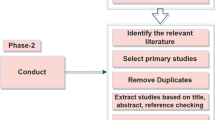Abstract
In Radio Frequency IDentification (RFID) system, one of the most important issues that affect the data integrity is the collision resolution between the tags when these tags transmit their data to reader. In majority of tag anti-collision algorithm, Dynamic Framed Slotted Aloha (DFSA) has been employed as a popular collision resolution algorithm to share the medium when multiple tags respond to the reader’s signal command. According to previous works, the performance of DFSA algorithm is optimal when the frame size equals to the number of un-identified tags inside the interrogation zone. However, based on our research results, when the frame size equals to number of tags, collision occurs frequently, and this severely affects the system performance because it causes power consumption and longer tag reading time. Since the proper choice of the frame size has a great influence on overall system performance, in this paper we develop an analytical model to study the system throughput of DFSA based RFID systems, and then we use this model to search for an optimal frame size that maximizes the system throughput based on current number of un-identified tags. In addition to theoretical analysis, simulations are conducted to evaluate its performance. Comparing with the traditional DFSA anti-collision algorithm, the simulation results show that the proposed scheme reaches better performance with respect to the tag collision probability and tag reading time.
Similar content being viewed by others
References
Prodanoff Z. G. (2010) Optimal frame size analysis for frames slotted ALOHA based RFID networks. Computer Communications 33: 648–653
Finkenzeller, K. (2000). RFID handbook: Radio frequency identification fundamentals and applications, Wiley.
International Organization for Standardization, ISO/IEC 18000 Part 6: Information technology automatic identification and data capture techniques-Radio frequency identification for item management air interface (2003).
Draft Protocol Specification for a 900 MHz Class 0 Radio Frequency Identification Tag, Auto-ID Center (2003).
Information Technology-Radio Frequency Identification for Item Management-Part 6: Parameters for Air Interface Communications at 860 MHz to 960 MHz, ISO/IEC 18000–6(E) (2004).
Chen, W. C., Horng, S. J., & Fan, P. (2007). An enhanced anti-collision algorithm in RFID based on counter and stack. In Proceedings 2nd international conference systems and networks communications (pp. 21–24).
860 MHz-930 MHz Class 1 Radio Frequency Identification Tag Radio Frequency and Logical Communication Interface Specification Candidate Recommendation Version 1.0.1 Auto-ID Center (2002).
Wang T. P. (2006) Enhanced binary search with cut-through operation for anti-collision in RFID systems. IEEE Communications Letters 10: 236–238
Ryu, J., Lee, H., Seok, Y., Kwon, T., & Choi, Y. (2007). A hybrid query tree protocol for tag collision arbitration in RFID systems. In Proceedings IEEE International Conference Communications (pp. 5981–5986).
Chiang, K. W., Hua, C., & Yum, T. S. P. (2006). Prefix-randomized querytree protocol for RFID systems. In Proceedings IEEE International Conference Communications (pp. 1653–1657).
Choi J. H., Lee D., Lee H. (2006) Bi-slotted tree based anti-collision protocols for fast tag identification in RFID systems. IEEE Communications Letters 10: 861–863
Lee, S., Joo, S., & Lee, C. (2005). An enhanced dynamic framed slotted ALOHA algorithm for RFID tag identification. In Proceedings MobiQuitous 2005 (pp. 166–172).
Cha, J., & Kim, J. (2005). Novel anti-collision algorithms for fast object identification in RFID system. In: IEEE Proceedings 2005 11th Int’l conference parallel and distributed systems (ICPADS) 2:63–67.
Schoute F. C. (1983) Dynamic frame length ALOHA. IEEE Communications Letters 31(4): 565–568
Vogt, H. (2002). Efficient object identification with passive RFID Tags. Proceedings Pervasive 2002. 98–113.
Vogt, H. (2002). Multiple object identification with passive RFID tags. 2002 IEEE international conference on systems, Man and Cybernetics.
Jia, L., & Youguang, Z. (2006). The analysis of anti-collision algorithm based on timeslot in RFID system, communication and network.
Author information
Authors and Affiliations
Corresponding author
Rights and permissions
About this article
Cite this article
Deng, DJ., Tsao, HW. Optimal Dynamic Framed Slotted ALOHA Based Anti-collision Algorithm for RFID Systems. Wireless Pers Commun 59, 109–122 (2011). https://doi.org/10.1007/s11277-010-0193-3
Published:
Issue Date:
DOI: https://doi.org/10.1007/s11277-010-0193-3




